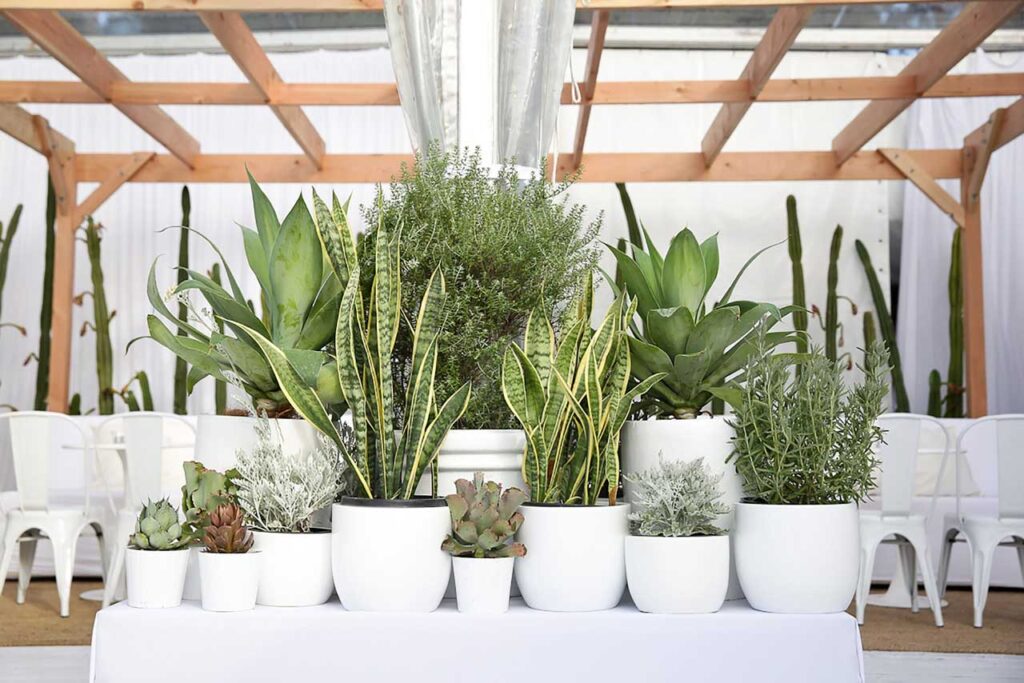Breathing clean, oxygen-rich air isn’t just a luxury—it’s a necessity, especially during the monsoon season when dampness, mold, and indoor air pollutants can quietly build up. If you’re wondering which indoor plant gives more oxygen, you’re not alone. Many households and office spaces are switching to indoor greenery for both air purification and aesthetic appeal. But during the rainy season, some indoor plants outperform others when it comes to releasing oxygen and absorbing toxins.
This blog is your in-depth guide to finding the best indoor oxygen-releasing plants for monsoon—rooted in scientific evidence, indoor gardening best practices, and wellness benefits. Let’s dive in.
Why the Monsoon Season Demands Better Indoor Air Quality
The monsoon season brings relief from the heat, but also increases humidity, fungal growth, and stale air indoors. Closed windows, lack of sunlight, and damp corners create the perfect breeding ground for mold, mildew, and allergens.
Here’s why this is a problem:
- Reduced Ventilation: Constant rains often force us to keep windows closed, reducing airflow.
- Damp Walls & Furniture: High humidity makes your home prone to dampness.
- Breeding Ground for Toxins: Increased chances of volatile organic compounds (VOCs) and carbon dioxide buildup.
This is where oxygen-rich indoor plants come to the rescue.
🌿 Which Indoor Plant Gives More Oxygen During Monsoon?
1. Areca Palm (Dypsis lutescens) – The Oxygen King 👑
If you’re asking which indoor plant gives more oxygen, the Areca Palm is one of the top contenders.
✅ Oxygen Benefits:
- Releases a high volume of oxygen during the day.
- Absorbs carbon dioxide, benzene, and formaldehyde.
- Acts as a natural humidifier—perfect for balancing the monsoon’s excess moisture.
🛠️ Care Tips:
- Needs indirect sunlight.
- Water moderately; avoid waterlogging.
- Wipe leaves weekly to prevent fungal buildup.
📦 Bonus:
It’s also pet-friendly and ideal for living rooms and home offices.
2. Snake Plant (Sansevieria trifasciata) – Nighttime Oxygen Generator 🌙
Known as Mother-in-Law’s Tongue, the Snake Plant is famous for releasing oxygen at night, making it ideal for bedrooms.
✅ Oxygen Benefits:
- Uses Crassulacean Acid Metabolism (CAM) to release oxygen at night.
- Filters out formaldehyde, trichloroethylene, and xylene.
- Effective against airborne allergies common during monsoons.
🛠️ Care Tips:
- Extremely low-maintenance.
- Needs little water—once every 10–14 days.
- Tolerates low light and high humidity.
📦 Bonus:
A NASA-approved air purifier that enhances sleep quality.
3. Money Plant (Epipremnum aureum) – Monsoon-Friendly Vibe 💸🌧️
The Money Plant, also known as Pothos, is a superstar air purifier and symbol of prosperity in Indian homes.
✅ Oxygen Benefits:
- Absorbs formaldehyde, benzene, and toluene.
- Releases ample oxygen.
- Excellent for removing indoor pollutants caused by dampness.
🛠️ Care Tips:
- Can grow in water or soil.
- Needs moderate light; avoid direct sun.
- Perfect for hanging baskets or desktop planters.
📦 Bonus:
Boosts feng shui energy while improving your air quality.
4. Peace Lily (Spathiphyllum) – The Floral Oxygenator 🌼
Combining beauty and functionality, the Peace Lily is one of the most recommended indoor flowering plants for air purification.
✅ Oxygen Benefits:
- Removes mold spores, formaldehyde, and benzene.
- Acts as a natural dehumidifier, essential during monsoon.
- Releases a balanced amount of oxygen even in low light.
🛠️ Care Tips:
- Thrives in indirect light.
- Water once a week; ensure good drainage.
- Wipe leaves regularly to prevent fungal infections.
📦 Bonus:
Its elegant white flowers add charm and calm to your interiors.
5. Tulsi (Holy Basil) – The Indian Powerhouse 🌱🇮🇳
If you’re an Indian household, chances are you’ve already got a Tulsi plant on your balcony or window sill. But did you know it’s a potent oxygen booster?
✅ Oxygen Benefits:
- Releases oxygen for 20 hours a day.
- Absorbs carbon dioxide, sulfur dioxide, and carbon monoxide.
- Fights airborne bacteria—a common problem in damp homes.
🛠️ Care Tips:
- Requires direct sunlight for 4–6 hours.
- Keep soil slightly moist during the rainy season.
- Grows well in earthen pots with good drainage.
📦 Bonus:
Has medicinal benefits like boosting immunity and curing colds.
How Indoor Plants Increase Oxygen – The Science Explained
Plants release oxygen through photosynthesis, absorbing carbon dioxide and releasing oxygen as a byproduct. But not all plants do this equally. Some use CAM photosynthesis, which allows them to release oxygen at night, making them unique for indoor environments.
Semantic Keywords (Also Used in the Blog):
- oxygen producing indoor plants
- air purifying plants for monsoon
- low maintenance indoor plants
- plants that absorb toxins
- indoor greenery for monsoon
- natural humidifiers
- plants for rainy season air quality
Comparison Table: Top Indoor Plants for Oxygen During Monsoon
| Plant Name | Oxygen Release | Air Purifying Ability | Monsoon Suitability | Care Level |
|---|---|---|---|---|
| Areca Palm | ⭐⭐⭐⭐⭐ | ⭐⭐⭐⭐ | ⭐⭐⭐⭐ | Moderate |
| Snake Plant | ⭐⭐⭐⭐ | ⭐⭐⭐⭐⭐ | ⭐⭐⭐⭐⭐ | Easy |
| Money Plant | ⭐⭐⭐⭐ | ⭐⭐⭐⭐ | ⭐⭐⭐⭐ | Easy |
| Peace Lily | ⭐⭐⭐⭐ | ⭐⭐⭐⭐ | ⭐⭐⭐⭐ | Moderate |
| Tulsi | ⭐⭐⭐⭐ | ⭐⭐⭐⭐ | ⭐⭐⭐⭐⭐ | Moderate |
Where to Place Oxygen-Rich Plants in Your Home During Monsoon
1. Living Room:
- Go for Areca Palm or Peace Lily.
- Helps neutralize damp air and add visual appeal.
2. Bedroom:
- Use Snake Plant for nighttime oxygen.
- Adds a peaceful vibe for better sleep.
3. Kitchen:
- Money Plant or Tulsi work best here.
- Removes cooking-related toxins and adds freshness.
4. Bathroom:
- Peace Lily thrives in humidity.
- Prevents mold buildup.
Monsoon Maintenance Tips for Indoor Plants
Monsoon can be tricky for plant health. Here’s how to care for your oxygen-producing plants during the rainy season:
- Avoid overwatering – Roots are more prone to rot during monsoon.
- Improve air circulation – Use fans or dehumidifiers.
- Use neem spray – Acts as a natural anti-fungal agent.
- Wipe leaves weekly – Prevents dust and fungal growth.
- Check for pests – Especially mealy bugs and aphids.
Health & Wellness Benefits of Having Indoor Plants in Monsoon
Still wondering why to invest in indoor oxygen plants? Here’s what science says:
- Cleaner Air: Absorbs pollutants and increases oxygen saturation.
- Reduces Allergies: Plants like Peace Lily and Snake Plant trap allergens.
- Improved Mood: Greenery reduces anxiety and depression.
- Better Sleep: Night oxygenators like Snake Plant improve sleep quality.
- Natural Air Filters: NASA’s Clean Air Study found plants remove up to 87% of toxins every 24 hours.
Bonus Tips: Choosing the Best Indoor Plant for Your Lifestyle
If you’re:
- A beginner ➝ Go for Snake Plant or Money Plant.
- A pet parent ➝ Avoid Peace Lily (mildly toxic); go for Areca Palm.
- A wellness enthusiast ➝ Choose Tulsi for dual benefits.
- Low on time ➝ Pick low maintenance indoor plants like ZZ plant and Spider Plant (both are great for air purification too!).
Final Verdict: Which Indoor Plant Gives More Oxygen During Monsoon?
If you had to choose just one plant, go with the Areca Palm for all-day oxygen release and natural humidification. For nighttime benefits, pair it with a Snake Plant. Want both purification and medicinal perks? Tulsi wins hands down.
No matter your choice, adding oxygen-rich indoor plants to your home or office during monsoon is one of the most impactful decisions you can make for your health, wellness, and productivity.
Ready to upgrade your indoor air this monsoon?
🌱 Choose your favorite oxygen-boosting indoor plant and breathe better starting today!
📞 Need help with indoor garden planning in Pune? Contact InterioForest for customized green decor and plant care support.
FAQs:
Q1. Which indoor plant gives oxygen 24 hours?
👉 The Snake Plant and Areca Palm are two plants known for continuous oxygen production, especially when paired.
Q2. Which plant removes the most toxins?
👉 Peace Lily and Money Plant are excellent at filtering out toxins like formaldehyde and benzene.
Q3. Can indoor plants survive during monsoon season?
👉 Yes, most thrive during monsoon if overwatering is avoided and placed in well-ventilated areas.
Q4. Which indoor plant gives more oxygen and is low maintenance?
👉 The Snake Plant tops the list—releases oxygen at night, needs minimal care, and survives in low light.
Q5. Are indoor plants good for health during monsoon?
👉 Absolutely! They clean air, reduce humidity-related health issues, and create a calming ambiance.

